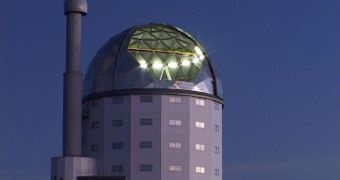A professor of astronomy at the University of Wisconsin-Madison (UWM) says that an imaging technique generally used to parse light coming from outer space could be used to detect incipient melanoma, before the skin cancer can develop further.
Catching melanoma early on is the safest bet for surviving this condition, which is deadly if not caught on time. Doctors can still make a difference though, if suspicious signs indicating that the disease is setting on can be found with advanced imaging methods.
UWM professor Andy Sheinis is himself at risk of developing melanoma, due to prolonged exposure to the Californian sun during his childhood. He needs to get checked up every six months or so, and many other people are in his situation as well.
His main occupation is to create instruments for large observatories, such as the W. M. Keck Observatory, in Hawaii, and the South African Large Telescope (SALT), in South Africa.
“I'm one of those people who has to be checked every six months. About half the time I go in they have to cut something off,” he says, The idea to merge technologies used in astronomy with medicine came to him about a decade ago, during such a consult.
Human doctors usually look for five things when assessing a regular mole's potential of turning into something more. They call this set of factors the ABCDE rule, as it includes the asymmetry, border irregularity, color, diameter and the way the mole evolves.
“They don't take pictures of them most of the time, which I found kind of surprising. The success of this technique depends strongly on the training and experience of the dermatologist,” the expert says.
With the help of a grant from the Wallace H. Coulter Translational Research Partnership program, Sheinis is now developing a hyperspectral imager at the UWM Laboratory for Optical and Computational Instrumentation (LOCI).
This instrument is a photo camera-sized device that can easily analyze the spectrum of all light visible in an image. It then goes on to build a visual representation of what it sees. The technology works very fast, and is also rather cheap to employ.
The new microscope could be used to inform surgeons about the borders of the melanoma tumor they are cutting out. The edges are not always clear, and, as a general rule, experts tend to cut only small amounts of skin.
“This could help us cut more accurately. We are always chasing cancers,” explains UWM School of Medicine and Public Health assistant professor of dermatology Yaohui Gloria Xu, quoted by SpaceRef.

 14 DAY TRIAL //
14 DAY TRIAL //